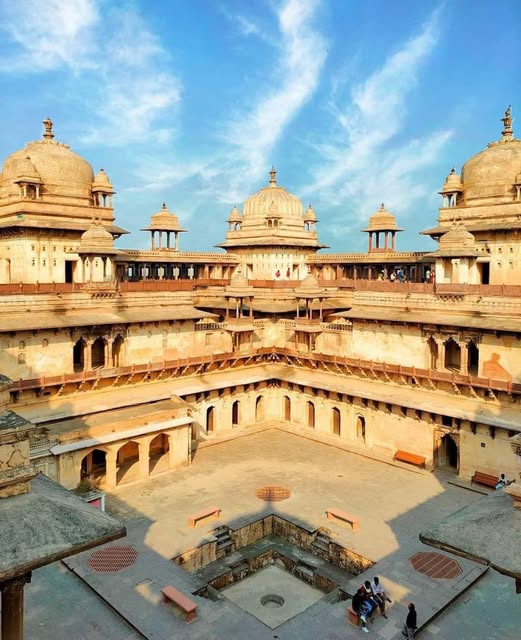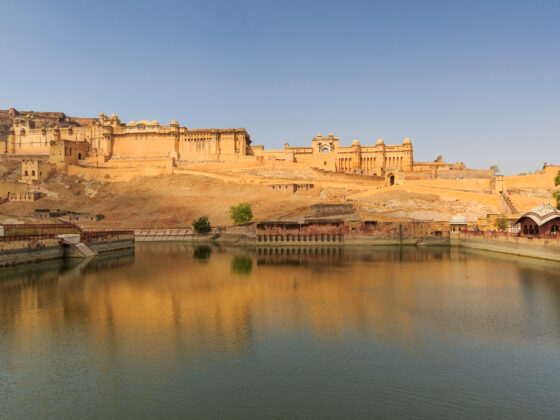The Magnificent Palace of the Bundela Rajputs at Orchha

Introduction
Nestled on the banks of the Betwa River, the historic town of Orchha in Madhya Pradesh is home to one of India’s most stunning architectural marvels—the palace of the Bundela Rajputs. This palace, a fine example of Indo-Islamic architecture, boasts a rich history, breathtaking aesthetics, and a royal legacy that continues to attract historians, architects, and travelers from across the world.
As we delve deeper, this article takes you on an insightful journey through the history, architectural splendor, and cultural significance of the magnificent palace of the Bundela Rajputs in Orchha. By the end, you will gain a profound appreciation for this extraordinary heritage site.
The History of the Bundela Rajputs and Orchha
The Bundela Rajputs, a prominent warrior clan of Central India, founded the princely state of Orchha in 1531 AD. Raja Rudra Pratap Singh, the visionary behind Orchha’s grandeur, established the kingdom and laid the foundation of its majestic palaces and forts. Over time, successive rulers of the Bundela dynasty continued to enrich the region with architectural masterpieces, including the iconic Jehangir Mahal, Raj Mahal, and Rai Praveen Mahal. As a result, these palaces stand as enduring symbols of the Bundela Rajputs’ valiant rule and their patronage of art and culture.
Architectural Grandeur of the Orchha Palace
The palace of Orchha is an architectural masterpiece that blends Rajputana aesthetics with Mughal influences. The design of the palace complex is characterized by its elevated terraces, ornate domes, elaborately carved brackets, and grand courtyards. Additionally, the strategic layout of the palaces reflects both the defensive and aesthetic sensibilities of the Bundela rulers.
1. Jehangir Mahal: The Crown Jewel of Orchha
One of the most celebrated structures in Orchha is Jehangir Mahal, built by Raja Bir Singh Deo in honor of Mughal Emperor Jehangir’s visit to the city in 1605. This stunning palace is a remarkable fusion of Hindu and Islamic architectural styles.
- Key Features:
- Three-tiered structure with elegant balconies and chhatris.
- Intricate jharokhas (overhanging balconies) offering panoramic views of Orchha.
- Grand gateways adorned with blue tiles and geometric patterns.
- Decorative lattice windows that enhance its visual appeal.
2. Raj Mahal: The Royal Residence
The Raj Mahal, once the royal abode of the Bundela rulers, is renowned for its vivid murals and fresco paintings that depict stories from Hindu epics like the Ramayana and Mahabharata.
- Key Highlights:
- The diwan-e-aam (hall of public audience) featuring exquisite wall paintings.
- Ornate ceilings decorated with mythological motifs.
- Hidden passageways and underground chambers that add an element of intrigue.
3. Rai Praveen Mahal: The Palace of the Courtesan
Dedicated to Rai Praveen, the famed poetess and dancer of Orchha, this palace reflects the artistic sensibilities of the Bundela rulers.
- Distinct Features:
- A two-storied structure with beautifully landscaped gardens.
- Elegant murals and frescoes depicting scenes of music and dance.
- Open pavilions that offer stunning views of the Betwa River.
Cultural and Historical Significance
The palaces of Orchha are not merely architectural marvels but also treasure troves of history and culture. The Bundela Rajputs were great patrons of art, literature, and music, and their palaces served as cultural hubs where poets, artists, and scholars thrived.
- Mythological Depictions: The frescoes in Raj Mahal narrate stories from Hindu mythology, making the palace a spiritual center as well.
- Royal Connection: The Bundela dynasty maintained close ties with the Mughal Empire, evident from the construction of Jehangir Mahal.
- Religious Heritage: Orchha is also home to the Ram Raja Temple, the only temple in India where Lord Rama is worshipped as a king.
Why You Must Visit the Orchha Palace
Visiting the magnificent palace of the Bundela Rajputs is a journey through history, art, and architectural brilliance. Therefore, here’s why you should explore this heritage site:
- Witness Majestic Architecture: The intricate carvings, domed pavilions, and expansive courtyards leave visitors spellbound.
- Immerse in History: Walk through the corridors where Rajput kings and Mughal emperors once held court.
- Explore Stunning Frescoes: The murals inside the palaces provide a glimpse into the artistic excellence of the Bundela period.
- Experience Tranquility: The palace complex, set against the backdrop of the Betwa River, offers a serene and picturesque ambiance.
- Enjoy Panoramic Views: Climb up the palace terraces to get breathtaking views of Orchha’s historic skyline.
Conclusion
The palace of the Bundela Rajputs in Orchha is an architectural and historical gem that continues to mesmerize visitors with its regal charm and artistic splendor. Its breathtaking structures, adorned with intricate carvings, majestic domes, and vivid frescoes, stand as a testament to the grandeur of the Bundela dynasty.
Therefore, step into the pages of history and explore the legacy of the Bundela Rajputs—a legacy immortalized in the magnificent palaces of Orchha!







